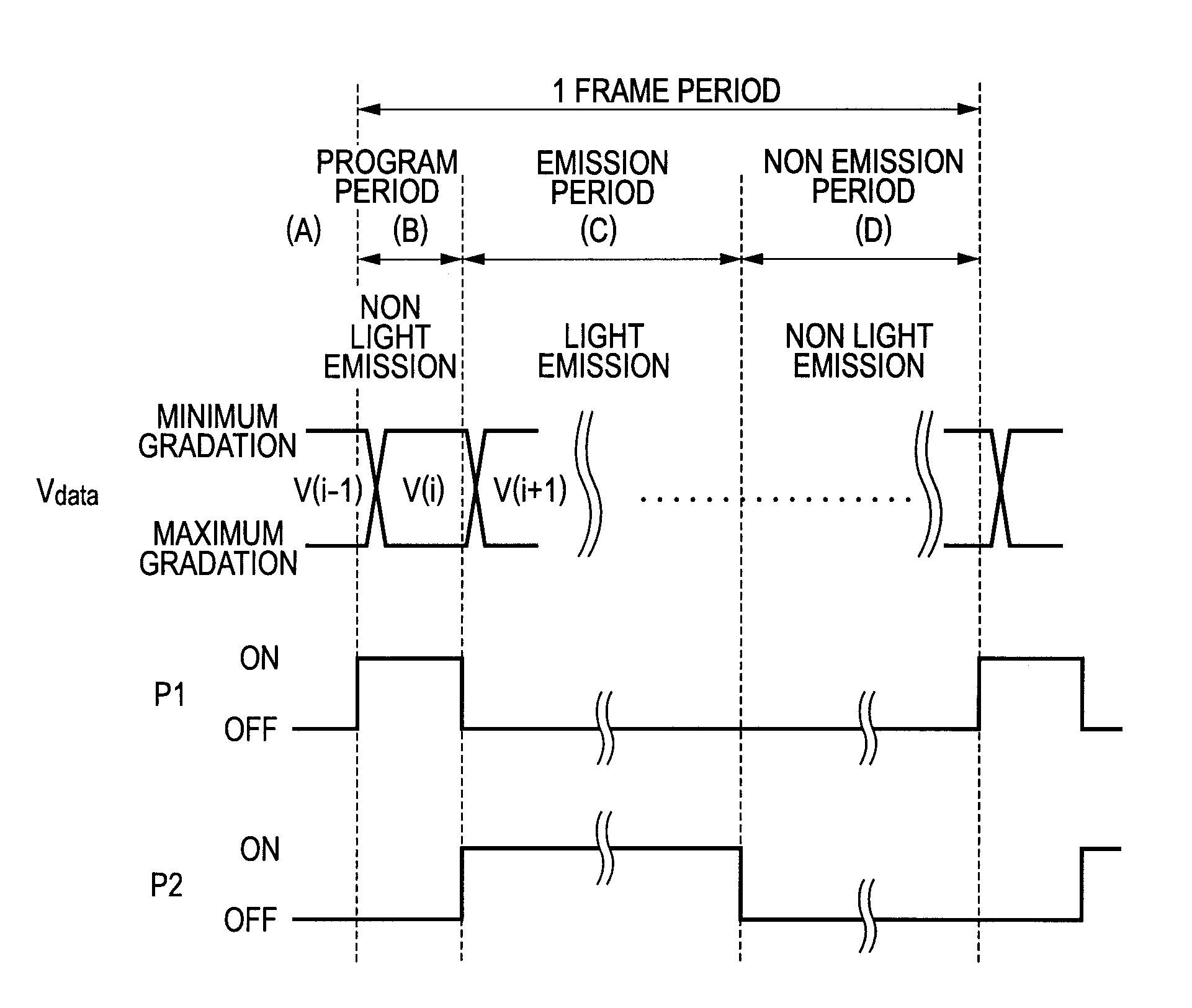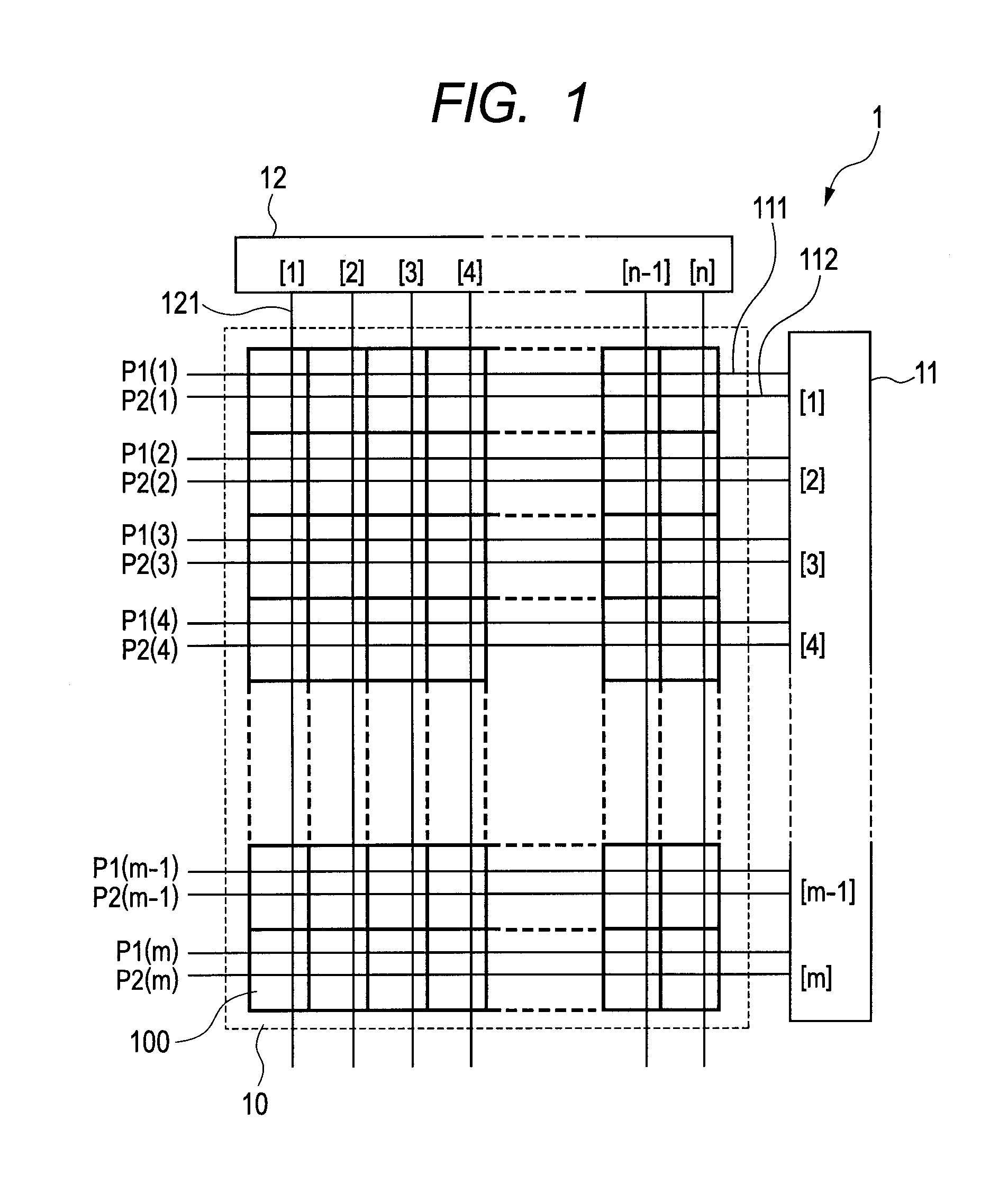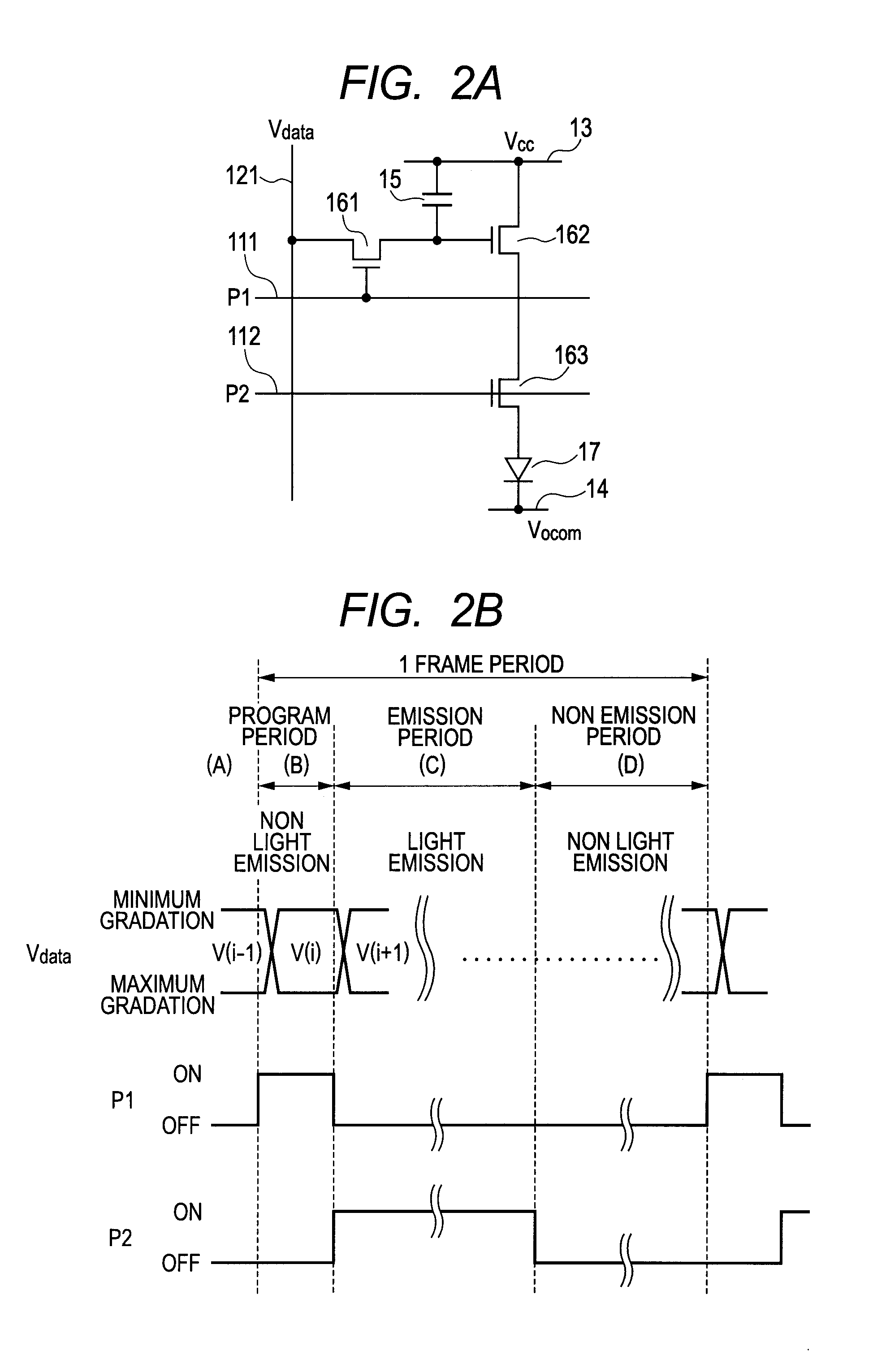Organic electroluminescence displaying apparatus
a technology of electroluminescence and displaying apparatus, applied in the field of electroluminescence displaying apparatus, can solve the problems of defective display, defective display, luminance variation, etc., and achieve the effect of suppressing a defective display
- Summary
- Abstract
- Description
- Claims
- Application Information
AI Technical Summary
Benefits of technology
Problems solved by technology
Method used
Image
Examples
first embodiment
[0026]FIG. 1 is a diagram illustrating a constitution of an organic EL displaying apparatus 1 according to the first embodiment of the present invention. In the present embodiment, the organic EL displaying apparatus 1 has a displaying region 10 in which a plurality of pixels 100 are two-dimensionally arranged in the form of m rows×n column (m, n are natural numbers). Each of the pixels 100 in the displaying region 10 is a red pixel, a blue pixel or a green pixel, and each pixel has an organic EL element, a driving transistor and an emission period controlling transistor. Here, the driving transistor supplies a current according to potential of the gate electrode to the organic EL element, and the emission period controlling transistor, which is connected between the source electrode or the drain electrode of the driving transistor and the organic EL element, controls light emission of the organic EL element in response to a control signal. Incidentally, the emission period controll...
example 1
[0066]A concrete example of the organic EL displaying apparatus 1 according to the first embodiment will be described hereinafter. Here, it should be noted that the present invention is not limited to the following examples. Moreover, it should be noted that the present invention is not limited by the polarities or the sizes of the transistors used in the following examples, the pixel arrangements, the pixel pitches, or the like.
[0067]In this example, in the pixel circuit illustrated in FIG. 2A, the selecting transistor 161 is an N-type transistor, the driving transistor 162 is a P-type transistor, and the emission period controlling transistor 163 is an N-type transistor.
[0068]In this example, the two-dimensional arrangement of the pixels 100 illustrated in FIG. 1 was set to 480 rows×1920 columns, and the pixel pitches of the pixels 100 in the row direction and the column direction were set to 94.5 μm and 31.5 μm respectively. Further, the pixels 100 were constituted so that pixels...
example 2
[0109]In the organic El displaying apparatus according to the first embodiment, another concrete example different from Example 1 will be described. The organic EL displaying apparatus in this example is the same as the organic EL displaying apparatus in Example 1 except that the polarities of the selecting transistor 161 and the emission period controlling transistor 163 in the pixel are the P type and the contrast is set to 10000:1.
[0110]In the pixel circuit constitution illustrated in FIG. 2A, the selecting transistor 161 is the P-type transistor, the driving transistor 162 is the P-type transistor, and the emission period controlling transistor 163 is the P-type transistor. The current value to be supplied to the organic EL element of each color pixel in the emission period at the maximum gradation displaying time was set to 5×10−7 A, and the gradation displaying data was set so that the contrast in the case where the proportion t (0162 having its channel length of 24 μm and its...
PUM
 Login to View More
Login to View More Abstract
Description
Claims
Application Information
 Login to View More
Login to View More - R&D
- Intellectual Property
- Life Sciences
- Materials
- Tech Scout
- Unparalleled Data Quality
- Higher Quality Content
- 60% Fewer Hallucinations
Browse by: Latest US Patents, China's latest patents, Technical Efficacy Thesaurus, Application Domain, Technology Topic, Popular Technical Reports.
© 2025 PatSnap. All rights reserved.Legal|Privacy policy|Modern Slavery Act Transparency Statement|Sitemap|About US| Contact US: help@patsnap.com



